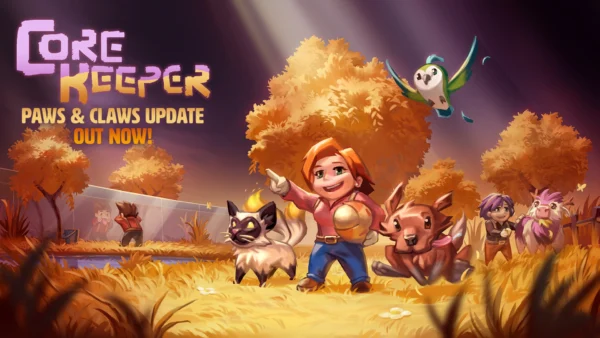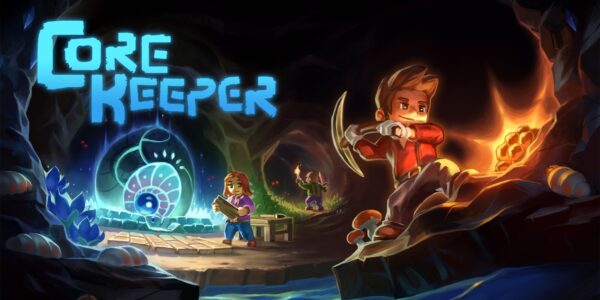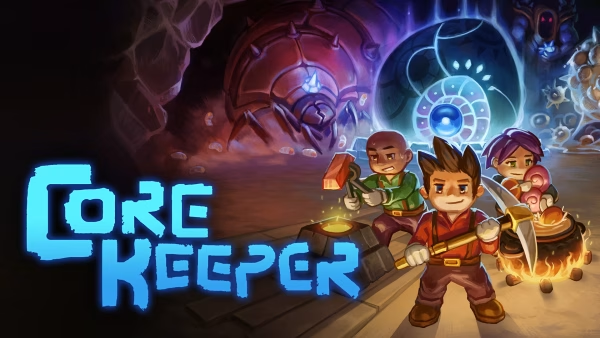Popular Now
Introduction
Core Keeper launched as an unexpected indie success, offering a cozy-yet-challenging blend of mining, exploration, base-building, and combat in a procedurally generated world. With pixel art charm and multiplayer support, it quickly built a dedicated community that fell in love with the game’s early-game loop—dig, craft, survive, and expand. However, as many players are now discovering in 2025, once you push past the core challenges and conquer the major biome bosses, Core Keeper presents a major problem: late-game stagnation. This article will explore how and why the game’s progression stalls in the late stages, what effects this has on the player base, and what can be done to reinvigorate the depth it initially promised.
1. The Core Gameplay Loop: Addictive Beginnings
At its foundation, Core Keeper nails the first 20–40 hours of gameplay. You spawn in a mysterious underground world, scavenge resources, set up a base, grow crops, craft tools, and prepare to face progressively harder biomes and bosses.
H3: Early and Mid-Game Strengths
The game thrives on discovery. Players are encouraged to:
-
Explore new biomes like the Clay Caves or Azios’ Wilderness
-
Unlock ancient technologies
-
Farm, fish, and forge unique weapons
H4: A Compelling Feedback Loop
This natural loop—gather, improve, explore—works well until the major boss encounters. Defeating each of these bosses initially feels climactic, but it also marks the beginning of the end for meaningful content.

2. The Boss Progression Problem
The three early game bosses—Glurch the Abominous Mass, Ghorm the Devourer, and Hive Mother—set a strong pace. Each encounter challenges a different preparation strategy and unlocks new systems. However, once players defeat all biome bosses and reactivate the Core, progression sharply slows.
H3: No Escalating Threat
After the Core is activated, no “world-changing” event follows. There are no significant threats that force players to keep upgrading or adapting. Unlike other survival games, Core Keeper doesn’t escalate past this point.
H4: Bosses as Milestones, Not Gates
The lack of post-boss gating means that defeating them removes tension from the world, turning it into a sandbox devoid of strong long-term goals.
3. Lack of Endgame Narrative or Lore Expansion
Core Keeper begins with mysterious energy, cryptic ruins, and ancient technology. But this intrigue doesn't evolve meaningfully in the late game. Players are left with unanswered questions and minimal narrative payoff.
H3: Lore Dead Ends
There are hints of a greater story—about the Core itself and the strange technologies found deep underground—but no quests, dialogue, or events flesh it out beyond scattered environmental clues.
H4: Missed Opportunities
-
No late-game NPCs with story branches
-
No dynamic events or world states triggered by lore discoveries
-
No player-driven decisions with lasting consequences
These absences weaken the incentive to keep exploring once core gameplay plateaus.
4. Limited Build Incentives and Base Expansion Motivation
Base-building is a huge draw for many players. In early and mid-game, it serves a clear purpose—crafting hubs, crop growth, and storage systems. But in the late game, with no looming threats or resource scarcity, it becomes functionally obsolete.
H3: Practicality Over Aesthetics
Many players report building large, beautiful bases only to realize there’s nothing meaningful to do in them. There are no late-game hazards (e.g., raids, weather systems) that test the effectiveness or value of complex base layouts.
H4: No Base Progression System
Unlike games like Terraria or Valheim, where your base evolves as new challenges arrive, Core Keeper’s base-building becomes static—decorative instead of strategic.

5. Biome Exploration Without Dynamic Variation
Core Keeper’s biomes are distinct, visually stunning, and contain different enemies and materials. However, once each biome is fully explored, there’s little reason to return, especially since they don’t evolve over time.
H3: Static Biomes Equal Stale Content
-
No roaming mega-bosses
-
No periodic resource spawns
-
No biome-specific quests or events
This results in exploration burnout.
H4: Minimal Replay Incentive
Since procedural generation lacks thematic depth changes, replaying on a new world doesn’t feel drastically different. This limits the game’s appeal in long-term play or New Game Plus-style modes.
6. Crafting System Plateaus Quickly
The crafting system in Core Keeper starts out strong, but by the time players have collected high-tier ores (Scarlet and beyond), there’s little need to craft or upgrade further.
H3: No Vertical Scaling
In a well-designed crafting system, items should scale vertically: better gear unlocks new gameplay mechanics or access to dangerous zones. In Core Keeper, top-tier gear mostly just deals more damage.
H4: Redundant Gear Options
-
Weapons often have overlapping stats
-
Armor lacks set bonuses or traits that significantly alter playstyle
-
No enchantment or modification systems to personalize gear
This leads to inventory clutter and crafting disinterest.
7. Absence of Late-Game Economic Systems
Many survival-crafting games introduce trading, economy, or large-scale automation in the endgame. Core Keeper has none of these mechanics in meaningful form.
H3: No Market, No Trade
There’s no in-game market, NPC faction system, or barter loop. After gathering sufficient resources, currencies like ancient coins become irrelevant.
H4: No Resource Sink
-
No housing or decorative prestige system
-
No high-value consumables or gear to spend resources on
-
No systems like auctions or trading posts
Without an economy or prestige path, resource gathering becomes purposeless.

8. Multiplayer Integration Doesn't Add Depth
Multiplayer in Core Keeper is fun, but it mostly replicates single-player content with added convenience. It doesn’t introduce new challenges or roles.
H3: No Class or Role Incentives
Players don’t have defined roles (like tank, healer, crafter) or systems that support teamwork synergy beyond shared space and combat. This limits strategic depth in multiplayer coordination.
H4: Missed Multiplayer Systems
-
No raid-style boss fights
-
No shared skill trees or collaborative structures
-
No PvP or team-based challenges
Without new cooperative content, multiplayer becomes a social experience, not a gameplay evolution.
9. Post-Game Goals Are Undefined
What do you do after finishing the main progression? The answer in Core Keeper is currently unclear. The sandbox is technically open-ended, but there are no designed systems to encourage creativity or challenge.
H3: Sandbox Without a Purpose
In games like Minecraft, players build mega-structures, automate farms, or challenge themselves with hardcore modes. In Core Keeper, such endgame sandbox goals are unsupported by systems.
H4: No Achievement-Based Incentives
There’s a lack of:
-
Unique trophies or in-game rewards for challenges
-
Community-driven leaderboard integration
-
Player-created quest or map sharing
This leads to a sense of “completion emptiness.”
10. The Patch Cycle and Community Expectations
The development team has promised updates, and patches have added features like new bosses and biome tweaks. However, the pace and scope of these updates have struggled to keep up with the community's long-term needs.
H3: Content Drops vs. System Expansion
New content (e.g., bosses, items) is welcome but doesn’t solve systemic issues. Players want dynamic systems, not just more of the same.
H4: What Players Are Asking For
-
World events (e.g., invasions, eclipse biomes)
-
Boss evolutions or “heroic modes”
-
Endgame skill trees or class archetypes
These suggestions reflect a desire for complexity and replayability—not just content quantity.
Conclusion
Core Keeper is an excellent example of how early-game mastery can still lead to late-game stagnation without long-term systems. Its core mechanics are rock solid—exploration, combat, base-building, and crafting are all enjoyable—but once players reach the end of the progression arc, the game struggles to offer meaningful goals or surprises. Late-game content is too static, too safe, and too shallow for those looking to invest hundreds of hours. To avoid becoming a game players love for 30 hours and forget forever, Core Keeper must invest in narrative depth, dynamic world systems, post-boss progression, and sandbox challenges that encourage experimentation. The core may be active—but without evolution, the keeper’s journey ends too soon.


















